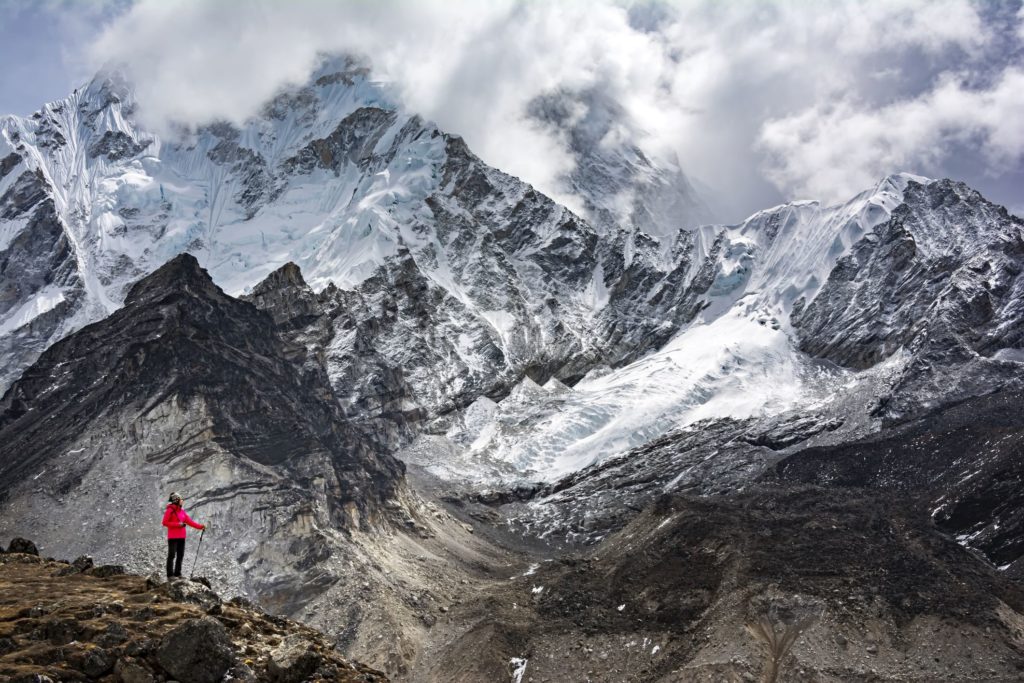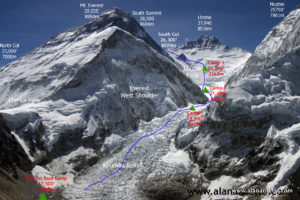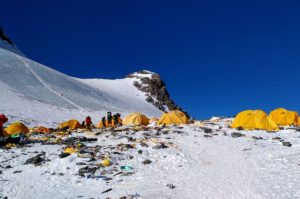
The tallest or rather the highest mountain in the world is Mount Everest, also known as ‘Sagarmatha’ in Nepal and ‘Chomolungma’ in Tibet. Mount Everest is located in the Mahalangur Mountain range, which is a part of the Greater Himalayas, in Nepal and Tibet. The peak of Mount Everest is 8,848 meters above sea level and the international border between Nepal and China runs across Everest’s summit point.
In the year 1865, Everest was given the official English name by the Royal Geographical Society. Throughout the year, Mount Everest attracts hundreds of climbers many of whom are highly experienced climbers.
GEOGRAPHY AND ENVIRONMENT OF THE EVEREST
The elevation of Mount Everest was first determined by an Indian survey in the year 1955 which claimed its elevation to be 8,848 meters above sea level. This was subsequently confirmed by a Chinese Survey in the year 1975. The summit of Everest is the point where the Earth’s surface reaches the greatest distance from sea level.
In the year 2008, a new weather station at an elevation of 8,000m above sea level on Everest went online and streamed its first data. The data in May 2008 read air temperatures at -17 Celsius, relative humidity at 41.3%, wind speeds of 46.1km/h, atmospheric pressure of 382.1hPa, and global solar radiation of 711.9 watts/m². One of the biggest issues that Mount Everest climbers face is the presence of high-speed winds. The peak of Everest reaches into the upper troposphere and goes on to penetrate the stratosphere which exposes it to the fast wind of the jet stream which is also freezing.
A wind speed of 280km/h was recorded at the summit of Everest in February 2004 and win speeds of over 160km/h are pretty common on the summit. These high-speed winds often blow climbers off the mountain. The air pressure at the summit is also one-third of what it is at sea level and the high wind speed further lowers the oxygen content of the air.
MOUNT EVEREST EXPEDITIONS
There are two main climbing routes that are available. One of them approaches the summit from the southeast direction from Nepal and this is considered to be the standard route. The other route is on the north side of Tibet. While there are few technical climbing challenges that are faced on the standard route, other kinds of dangers persist such as altitude sickness, extreme weather, avalanches, and the deadly Kumbhu Icefalls. As of the year 2016, more than 200 corpses lie on Everest many of which serve as landmarks. The reason why a lot of bodies are left on the mountain is that it is a highly dangerous and expensive task to bring down bodies from the top reaches of the mountain and endangers the life of the people who try to bring them down, thus they are left on the mountain.
Tenzing Norgay and Edmund Hillary were the first persons ever to have climbed the summit of the mighty Everest in the year 1953. They started their expedition from the southeast ridge route. Since then, many mountaineers have made it to the top of the mountain while many others have lost their lives trying to.
Know what you want? Buy your hiking gear here now!
DANGERS ON THE MOUNT EVEREST – THE DEATH ZONE
On the higher reaches of Mount Everest, climbers looking to reach the summit spend a substantial time in a zone known as the Death Zone. Altitudes higher than 8,000m on the mountain are known as the Death zone. Temperatures in this region can dip to extremely low levels causing frostbites on any part of the body exposed to the cold. There are several frozen crevasses in this zone that if stepped on by mistake, could mean death. High winds in this zone are also a cause of danger.
You may also read- The Seven Summits
The atmospheric pressure in this zone is one-third of that at sea levels resulting in a very low level of oxygen and climbers who run out of oxygen cylinders often face a high risk of death. It takes 12 hours on average to walk a distance of 1.72 kilometers such are the conditions of this region. So, it is advised that the climbers undertake every precaution possible to protect themselves from hazards like breathlessness, frostbite, and snow blindness.


